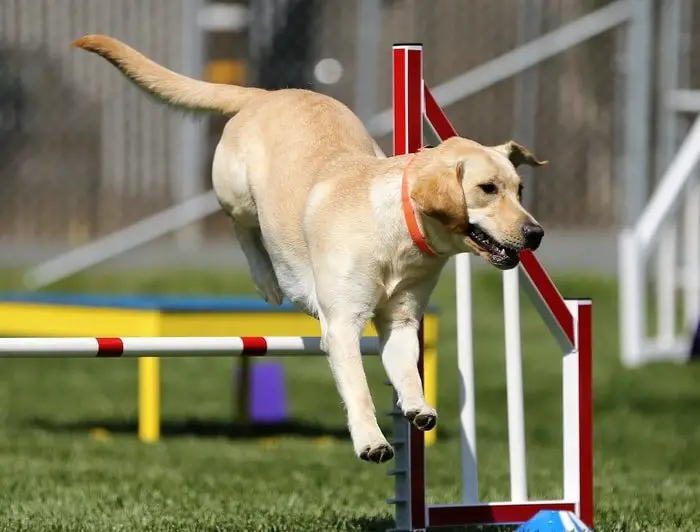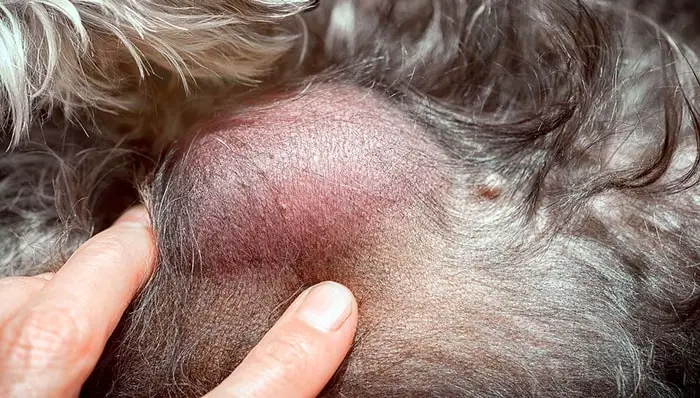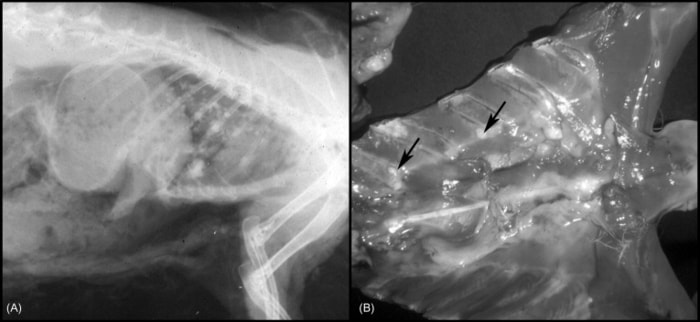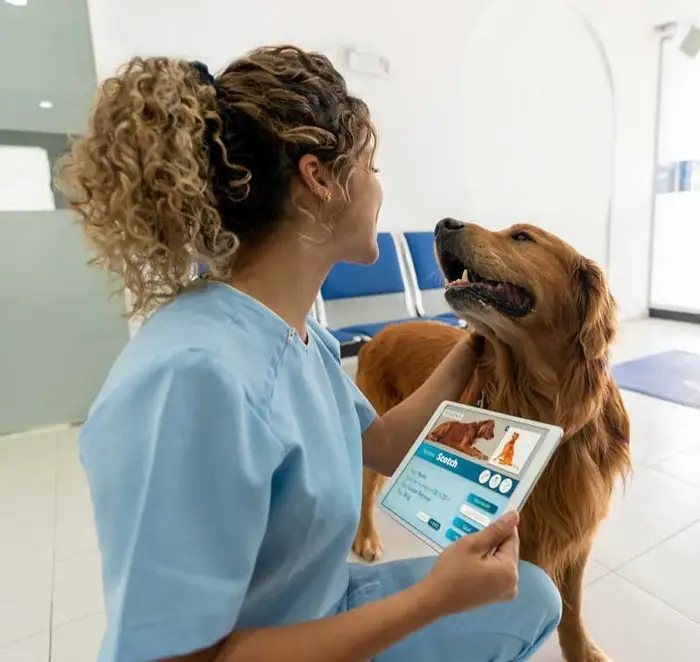Chondrosarcoma in dogs is the second most common bone tumor and is most commonly seen in middle-aged dogs. But the average age of onset of 6-8years old, although it can occur in any age of dogs. Lesions can originate in the ribs (most common primary rib tumor), long bones, extraskeletal sites, nasal cavity, vertebrae, facial bones, pelvis, digits, and os penis. The nasal cavity is commonly affected.
What causes canine Chondrosarcoma?
The exact cause is unknown, although lesions can occur in cases of multiple cartilaginous exostoses. Multiple cartilaginous growths or protrusion may lead to this type of cancer.

Breeds are Prone to Chondrosarcoma in Dogs
Chondrosarcoma in dogs may appear to be more common in medium to large breeds of dogs. The breeds which may be at risk include:
- Golden Retrievers.
- Boxer Dogs.
- Labrador Retrievers.
- Bernese Mountain Dogs.
- Rottweilers.
- German Shepherds.
- Doberman Pinschers.

What are the Signs and Symptoms of Chondrosarcoma?
Chondrosarcoma in dogs occurs most commonly in the flat bones of the body, such as in ribs, nasal bones, and the pelvis. The signs and symptoms include:
- Pain upon palpation of the lesion.
- Swelling may occur at the tumor site.
- Intrathoracic extension of tumors may give rise to pleural effusion.
- Decreased appetite.
- Pain and dehydration.
- Feeling pressure around the mass.
- Sneezing and difficult breathing if tumors involve in the nasal cavity.
- The bones of affected limbs may lead to fracture.
- Bulging of the eyes if Chondrosarcoma in the skull.
- Pain and weakness in the rear legs if the Chondrosarcoma of the pelvis.
- Limping of the affected legs involves the long bones of legs.

How is Chondrosarcoma Diagnosed?
Your veterinarian analyzes the thorough history of your dog’s health and performs the initial diagnostic tests for Chondrosarcoma that are very important. Your vet will do a detailed physical examination, including a complete blood count (CBC), biopsy, histopathological examination, X-rays, CT scan, MRI, etc. In this situation, most cases will not have any visible changes in their bloodwork or urinalysis. The primary diagnostic method for confirming Chondrosarcoma diagnosis usually is a biopsy of the growth for microscopic laboratory analysis.
Differential Diagnosis of Canine Chondrosarcoma
The disease may be confused with the following diseases:
- Another primary bone tumor.
- Osteomyelitis in dogs.
Treatment of Chondrosarcoma in Dogs
The treatment of Chondrosarcoma is crucial, and the proper treatment for Chondrosarcoma is surgical removal. Your vets perform the surgery, and it should be performed in wide margins, removing a large amount of suspected healthy tissue. Amputation or limb salvage is usually prescribed when there is no metastasis of the tumor in the affected limb. Radiotherapy is very important for nasal tumors, and this also helps prolong the lifespan and relieve the pain in those dogs in which tumors are inoperable.

Also, please consult your veterinarian on food intake during recovery, and it is essential for that time in your dog be getting the proper amounts of food. It would be best if you were maintained and provide a comfortable, quiet place to rest during the recovery period. Keep in mind that more complications may arise when surgery is performed in the surgical area. It should be managed carefully; otherwise, it can significantly impact your pup’s overall quality of life.
Prognosis of Chondrosarcoma in Dogs
The prognosis is good to guard if complete excision of the tumor is accomplished. Chemotherapy with cisplatin is appropriate for nonresectable tumors; however, the response of Chondrosarcoma to radiation and chemotherapy is inadequate.
